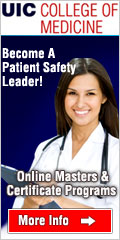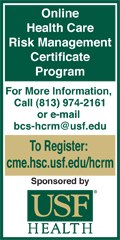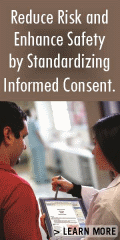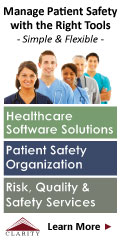 |
 |
 |

May / June 2005

Medication Safety
Compliance Made Easy:
Understanding USP 797
By Eric Steen
During the 1960s, the practice of pharmacy began growing and evolving. In response to an increasing number of patient injuries due to medication delivery and sterile compounding, the industry began calling attention to safety. For the next 30 years, various pharmacy organizations published documents in an effort to establish a standard for the practice of compounding sterile preparations (CSPs). However, none of the documents were successful in providing a professional mandate and the handling of sterile product preparation by licensed pharmacies varied nationally through the 1990s.
In 1998, The U.S. Food and Drug Administration Modernization Act of 1997 (FDAMA), which included a section on pharmacy compounding, was signed into law. The law introduced limits on pharmacy compounding and attempted to protect patients from unnecessary use of compounded drugs. Unfortunately, the power of regulation granted to the FDA by the FDAMA was ruled unconstitutional by the U.S. Supreme Court in 2001, and so the efforts to improve the quality of pharmacy-prepared CSPs continued.
The United States Pharmacopeia (USP) drafted a revision of the general information chapter 1206, which was proposed as a guideline and detailed the procedures for preparing sterile drugs intended for home use. The FDA committee wanted an enforceable entity and, by changing chapter 1206 to chapter 797 and moving it into the General Tests and Assays portion of the USP, they established a legal base by which the FDA could determine whether a drug has been adulterated. The revision of the chapter ensures that medications are compounded accurately and appropriately, protecting patients from microbially contaminated preparations. The new USP chapter 797, Pharmaceutical Compounding: Sterile Preparations, became enforceable by regulatory agencies on January 1, 2004.
Safety Checks
The provisions and requirements of USP 797 are designed to achieve compounding accuracy and sterility to ensure the safety of patients. Through a series of written guidelines, USP 797 regulates the personnel conducting the compounding process and the process itself. In order to mandate consistently accurate and unadulterated compounded medications, USP 797 enlists quality controls for technique, method, and validation, building quality and safety into the entire compounding process. CSPs must be accurately identified, measured, diluted, and mixed. They must then be appropriately purified, sterilized, packaged, sealed, labeled, stored, dispensed, and distributed. Any adulterated, misbranded, or mislabeled drug that is sold or distributed is in direct violation of the requirements of the Food, Drugs, and Cosmetic Act.
USP 797 combines process and preparation quality controls with formal staff training and competency assessment guidelines. The responsibilities of compounding personnel, how risk levels are determined, and maintaining quality after a medication leaves the pharmacy are just a few of the policies mandated by USP 797. USP 797 is the first set of published standards that can be applied to all pharmacy settings.
The writing of chapter 797 by the USP comes after decades of increasing safety and quality consciousness. Compounding medications has always been and continues to be a high-risk, labor intensive process. Several factors can contribute to improper compounding or non-sterile preparations, both of which can be a cause of death or injury in patients. Studies have provided ample evidence of the prevalence of pharmacies' compounding errors, and there have been isolated published reports of patient death and injury associated with sterile preparations. The implementation of USP 797 ensures that pharmacies will not overlook problems or evade compliance with necessary provisions.
Pharmacies are expected to be in compliance with the USP 797 sterile compounding requirements during inspections, surveys, enforcement actions, and accreditation. USP 797 is considered a standard of practice and as such can be adopted and enforced by the FDA, local state boards of pharmacy, and accreditation organizations. The Joint Commission on Accreditation of Healthcare Organizations (JCAHO) has stated that healthcare organizations can expect to be surveyed for compliance with USP 797. Also, the American Society of Health System Pharmacists (ASHP) Accreditation Services Division requires that a pharmacy comply with all federal, state, and local regulations concerning pharmacy practice.
Saving Labor, Saving Costs
The costs associated with adapting and correcting a facility to achieve all the components of USP 797 can be staggering. In order to continue compounding sterile medications, pharmacies will have to implement the many extensive controls and procedures of USP 797, a process that can drain personnel and resources. Outsourcing helps eliminate the cost and labor associated with meeting requirements and maintaining essential accreditations. By outsourcing, pharmacies, hospitals, and other providers can be confident that they are compliant with USP 797 while reducing risk, inventory, and precious staff resources.
Eric Steen is president of CAPS, B. Braun's Central Admixture Pharmacy Service.
|
 |
 |
 |


















|
 |

